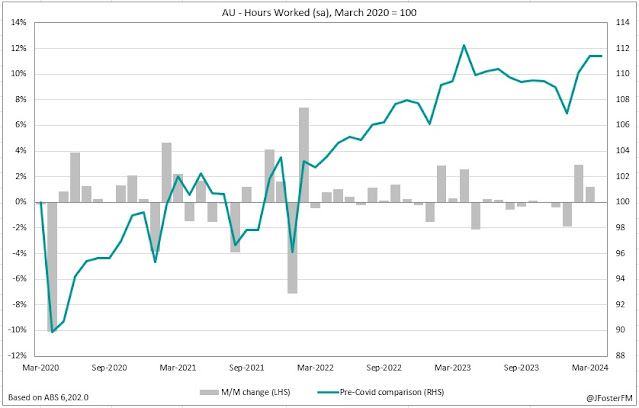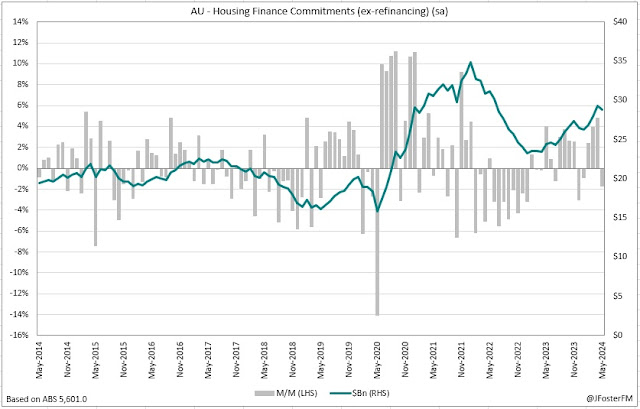Australia's goods trade surplus came in above expectations at $5.6bn in June from a downwardly revised $5.1bn in May. Moderating strength in export revenues and elevated import spending has seen the size of the trade surplus narrow. The surplus for the June quarter was $16.3bn, down from $20.4bn in the March quarter and the lowest quarterly total since Q4 2020.
Monthly exports lifted by 1.7% to $43.8bn in June (-2.8%yr). This reflected increases across the board: rural goods 5.6%, non-rural goods 0.8% and non-monetary gold 5.6%. However, export values saw a 3.4% decline for the June quarter, retracing to $129.3bn - the lowest level since the final quarter of 2021. Commodity price weakness on softer global demand led to weakness in rural goods (-5.1%) and non-rural goods (-3.6%). The ABS's trade price series, also released today, showed export prices were down 5.9% for Q2 as iron, coal and natural gas all saw material price declines.
Imports for June moderated to a 0.5% rise following a 3.3% lift in May. The total for imports in the month was $38.2bn, remaining around record highs. Imports for the June quarter came to $112.9bn, a slight decline (-0.5%) on the previous quarter, but again at a level just off record highs. The main movements in the quarter were declines in consumption goods (-1%) and intermediate goods (-0.5%); by contrast, capital goods advanced (0.7%). The ABS reported a fairly modest 1% rise in import prices in Q2. This combination of increased spending but lower prices implies volume demand for imports contracted.


















































